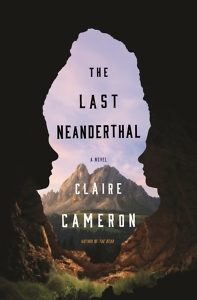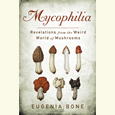Before Extinction
Claire Cameron’s The Last Neanderthal gives words to a human ancestor who used very few
In The Last Neanderthal , Claire Cameron takes on the daunting imaginative task of rendering into words the life of an individual who uses few words and who thinks in other terms. Her Neanderthal character, Girl, uses senses and instincts that are necessary for survival in a harsh natural environment but have withered away in modern humans. Despite her limited vocabulary, Girl is capable of complex and creative thought, and her experience of pregnancy and childbirth is universal, cutting across all differences in environment, time, and even species.
 For this novel, her third, Cameron toggles between Girl and a modern archaeologist, Rose, who has discovered the bones of a Neanderthal woman and a homo sapiens man together in a suggestively sexual position. Her study has convinced her that Neanderthals were much more than hairy, grunting brutes whom the more evolved homo sapiens species wiped out, and these bones suggest that interaction between the species was not necessarily hostile.
For this novel, her third, Cameron toggles between Girl and a modern archaeologist, Rose, who has discovered the bones of a Neanderthal woman and a homo sapiens man together in a suggestively sexual position. Her study has convinced her that Neanderthals were much more than hairy, grunting brutes whom the more evolved homo sapiens species wiped out, and these bones suggest that interaction between the species was not necessarily hostile.
In Cameron’s reconstruction, Neanderthals communicate with each other and teach their young. They even tell stories. But most communication is conducted through a combination of signs, gestures, and smells. Girl’s mother knows Girl is pregnant; she can smell it. The old woman then drives her out of the tightly knit family, a devastating event: “To take a body out of the family was like severing a limb,” Cameron writes. “With no words to convey the complexity of her thoughts, Girl focused on what she could do,” what she has to do, given the basic rigors of her life.
 While Cameron’s depiction of Girl involves many conjectures, Rose is a more familiar character: hard-driving, competitive, and determined to carry on with her archeological work to the very end of pregnancy. As The Los Angeles Review of Books points out, “the two narratives— excavator and the excavatee; human and Neanderthal; present and past—are inexorably intertwined and neatly juxtaposed with authentic details and captivating characters.”
While Cameron’s depiction of Girl involves many conjectures, Rose is a more familiar character: hard-driving, competitive, and determined to carry on with her archeological work to the very end of pregnancy. As The Los Angeles Review of Books points out, “the two narratives— excavator and the excavatee; human and Neanderthal; present and past—are inexorably intertwined and neatly juxtaposed with authentic details and captivating characters.”
This novel thus offers a convincing look at how old stereotypes can yield to scientific discovery. The New York Times called it “a deeply sympathetic portrait of a Neanderthal girl struggling to survive some 40,000 years ago, battling leopards, bison, a brutal winter and starvation,” and it is especially useful for illustrating archeological research into the hard, short, insecure lives of the Neanderthals. Above all, though, the book is a gripping, fast-moving read.

Ralph Bowden, who holds a Ph.D. from the University of North Carolina, has worked as an electrical engineer, history professor, home builder, alternative-energy consultant, and technical writer. A former resident of both Knoxville and Chattanooga, he lives in Cookeville.


